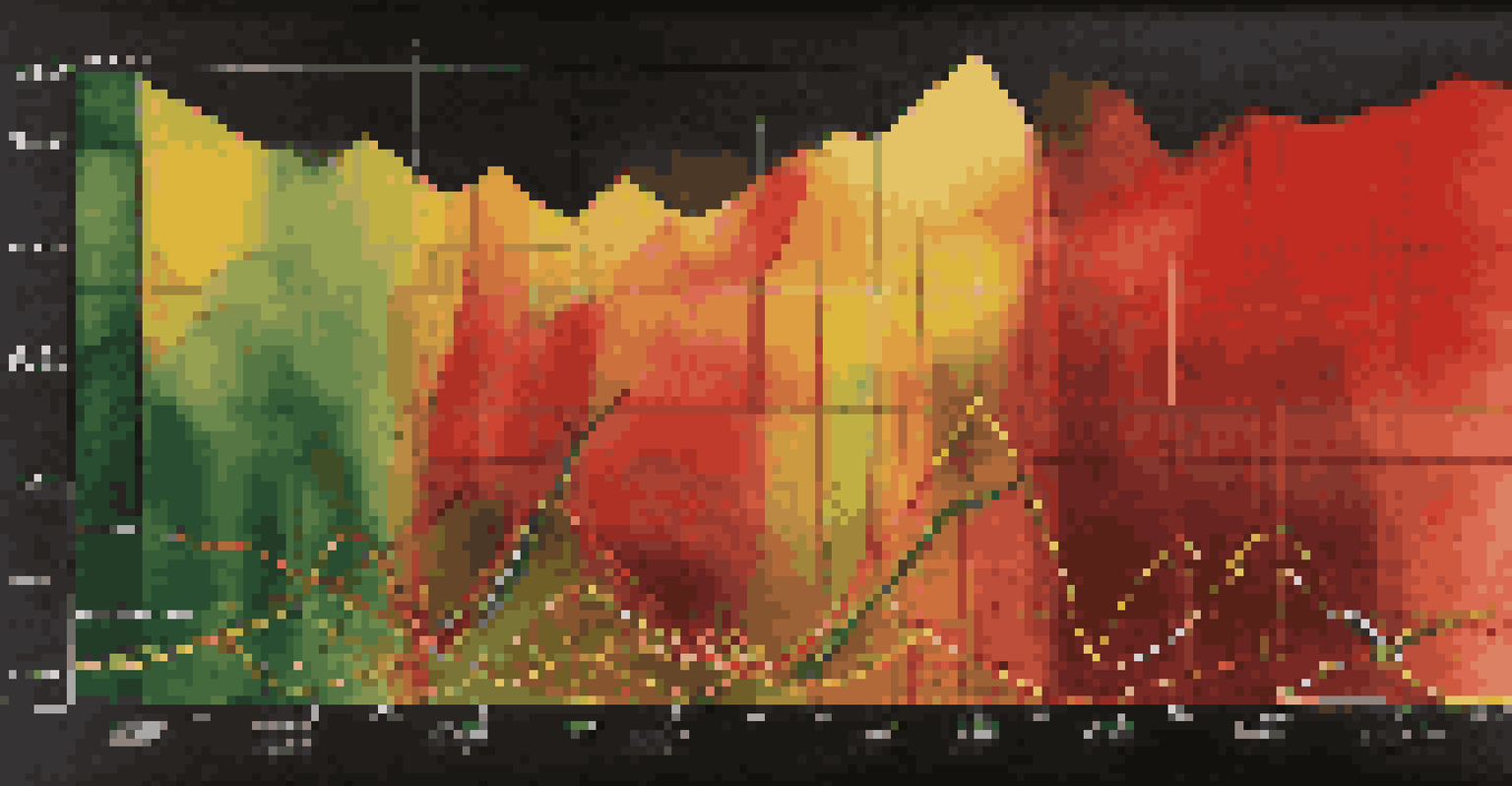Exploring the Relationship Between Derivatives and Volatility

Defining Derivatives and Their Role in Finance
Derivatives are financial contracts whose value is derived from an underlying asset, like stocks or commodities. They come in various forms, including options and futures, and are primarily used for hedging risk or speculating on price movements. Understanding these instruments is crucial for grasping their impact on market dynamics.
In investing, what is comfortable is rarely profitable.
For instance, a farmer might use futures contracts to lock in a price for their crops, reducing uncertainty about future revenue. On the other hand, traders can use options to speculate on price changes, potentially leading to higher market volatility. This dual nature of derivatives—risk management and speculative trading—makes them essential in financial markets.
Overall, derivatives are powerful tools that can amplify both opportunity and risk, which sets the stage for their relationship with volatility.
Understanding Volatility: What It Means for Investors
Volatility refers to the degree of variation in trading prices over time, often seen as a measure of risk. High volatility means prices can change dramatically in a short period, while low volatility indicates more stable prices. Investors closely monitor volatility as it influences their strategies and the perceived risk of their investments.

For example, during earnings season, a company's stock may experience significant price swings based on quarterly results. These fluctuations can create opportunities for traders but also increase the risk of substantial losses for investors. Understanding volatility helps traders make informed decisions about when to enter or exit positions.
Derivatives Shape Market Dynamics
Derivatives, such as options and futures, play a crucial role in financial markets by enabling risk management and speculation, thus influencing overall market behavior.
Thus, volatility is a critical component in the landscape of investing, and its interplay with derivatives can shape market behavior.
How Derivatives Can Influence Market Volatility
Derivatives can amplify market volatility through mechanisms such as leverage and speculation. When traders use options or futures, they can control larger positions with a smaller amount of capital, increasing potential profits but also risks. This leverage can lead to rapid price movements as traders react to market news or changes.
Volatility is not a bad thing; it is the price of opportunity.
For instance, if a significant economic report is released, traders may rush to buy or sell derivatives based on their expectations, causing underlying asset prices to swing wildly. This reaction can create a feedback loop, where the initial price movement triggers further trading activity, increasing overall market volatility.
As a result, derivatives not only reflect market sentiment but can also actively shape it, making them a vital factor in understanding volatility.
The Role of Implied Volatility in Derivative Pricing
Implied volatility is a crucial concept in the pricing of options, representing the market's expectations of future volatility. Higher implied volatility typically leads to higher option premiums, as it suggests greater uncertainty about the underlying asset's price movements. This relationship makes implied volatility a key indicator for traders.
For example, if investors anticipate a major event, like a product launch or earnings report, implied volatility often rises as traders price in the potential for large price swings. Conversely, when uncertainties decrease, implied volatility tends to fall, leading to lower option prices. Understanding this dynamic helps traders gauge market sentiment and adjust their strategies.
Volatility Reflects Market Sentiment
Volatility serves as a key measure of risk in investing, with fluctuations in prices reflecting investor sentiment and influencing trading strategies.
Thus, implied volatility not only influences derivative pricing but also serves as a barometer for market expectations, linking it closely to the broader concept of volatility.
Volatility Indexes: Gauging Market Sentiment
Volatility indexes, such as the VIX, are often referred to as 'fear gauges' in the market. These indexes measure the market's expectations of future volatility based on options prices, providing insights into investor sentiment. A rising VIX typically indicates increased fear or uncertainty among investors, while a declining VIX suggests a more stable outlook.
For instance, during a market downturn, the VIX tends to spike as traders seek protection through options, reflecting rising concerns about potential losses. Conversely, during bullish trends, the VIX may decline as confidence grows. Understanding these trends can help investors make more informed decisions.
In this way, volatility indexes act as a valuable tool for interpreting market conditions and understanding the interplay between derivatives and volatility.
Strategies for Managing Volatility in Derivative Trading
Managing volatility is crucial for traders using derivatives, as it can lead to substantial gains or losses. One common strategy is to use hedging techniques, where traders take positions in derivatives to offset potential losses in their underlying assets. This approach can help stabilize returns and reduce overall risk.
Another strategy is to employ options spreads, which involve buying and selling options simultaneously to limit exposure to volatility. For example, a trader might use a bull call spread to capitalize on rising prices while capping potential losses. These strategies allow traders to navigate volatile markets while maintaining some level of protection.
Strategies to Navigate Volatility
Effective strategies like hedging and options spreads allow traders to manage volatility risks, helping them stabilize returns in uncertain market conditions.
Ultimately, understanding and managing volatility is key to successful derivative trading, allowing investors to thrive even in uncertain conditions.
The Future of Derivatives and Volatility in Financial Markets
As financial markets evolve, the relationship between derivatives and volatility continues to transform. Advances in technology and data analytics are providing traders with new tools to gauge and respond to volatility. The rise of algorithmic trading and artificial intelligence is also reshaping how derivatives are used and how volatility is perceived.
For instance, machine learning models can analyze vast datasets to predict volatility trends, enabling traders to make more informed decisions. Additionally, the growing popularity of cryptocurrencies and decentralized finance (DeFi) is introducing new derivative products that may further impact market volatility. Understanding these shifts is essential for anyone involved in trading or investing.

Looking ahead, the interplay between derivatives and volatility will remain a critical area of focus, highlighting the need for ongoing education and adaptation in this dynamic landscape.